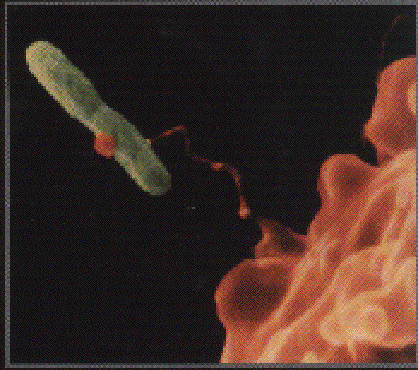
ABOUT LEGIONELLA
Legionnaires' disease is a disease caused by the organism LEGIONELLA PNEUMOPHILA, which is found naturally in water and soil where it is normally harmless. But when it gets the right conditions of temperature, nutrient supply and pH, it multiplies rapidly, and if there is aerosol formation and a susceptible population, these are all the ingredients for an outbreak.
The term "Legionnaires' disease" was first coined to describe an explosive common source outbreak of pneumonia caused by an unknown agent afflicting persons attending an American Legion Convention in Philadelphia in July 1976. Of 192 diagnosed cases, 20 were fatal. Examinations of lung tissue from some of the fatal cases demonstrated the presence of a previously unknown organism which was eventually called LEGIONELLA PNEUMOPHILA. Although there are in excess of 54 species of legionellae, Legionella Pneumophila is by far the most important human pathogen.


Legionnaires' Disease mainly affects adults, with men being more at risk than women. The greatest incident of disease is in men over 40 years of age who also smoke. Persons who are immuno-compromised or suffering from respiratory disorders are also at higher risk. Infection is by inhalation of contaminated water droplets. If antibiotic therapy of the appropriate kind is not applied soon after diagnosis, significant mortality can result.


Legionellae are widespread in the aquatic environment and can survive in water for prolonged periods, but cannot grow by themselves. In nature they grow in association with other natural aquatic micro-organisms, which presumably provide them with nutrients. To control the growth of legionellae in man-made systems it is essential that the growth of other aquatic organisms and biofilms are limited.